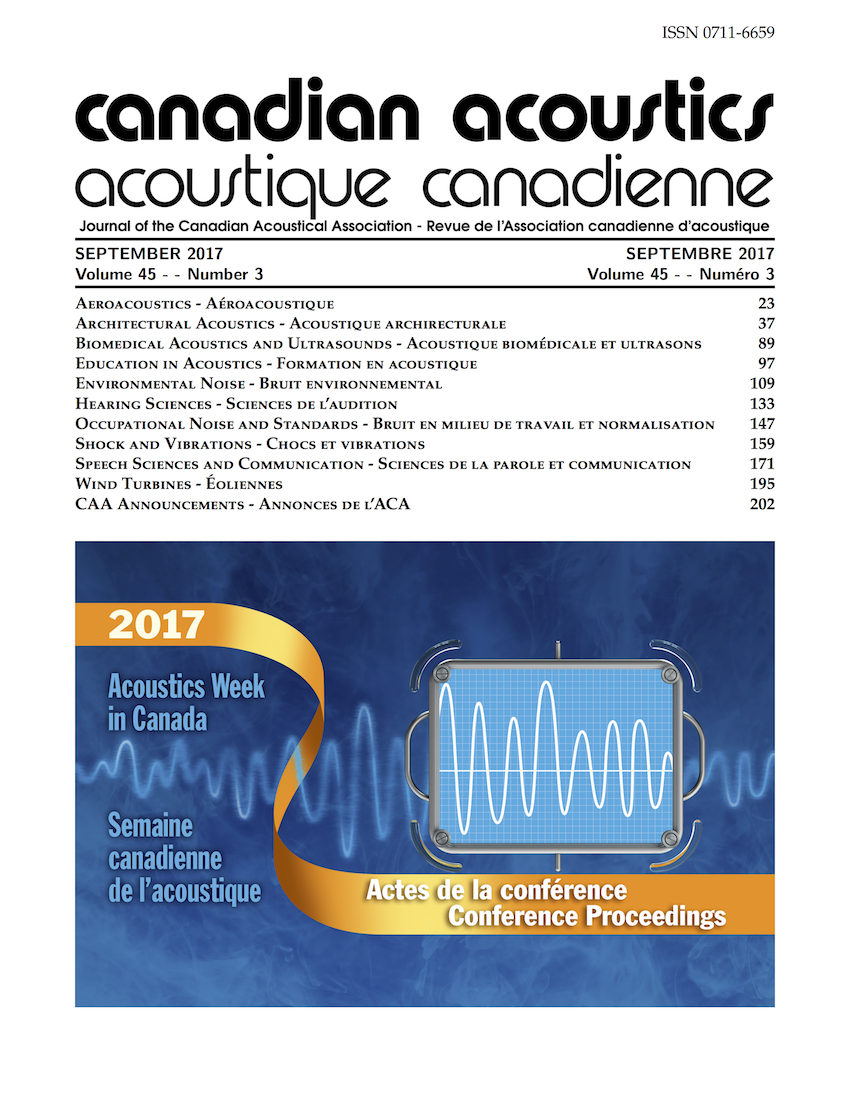Cross-Linguistic Bracing: A Lingual Ultrasound Study of Six Languages
Abstract
Lateral bracing refers to contact of the sides of the tongue along the upper molars or palate; evidence from articulatory analysis of native English speakers as well as 3D biomechanical simulations suggests that bracing involves mechanical support which occurs consistently throughout speech [Gick et al. 2017. J Speech Lang Hear Res. 60(3):494-506]. Release of lateral bracing occurs only during some lateral consonants and low vowels. The current study tests for the presence of active lateral bracing in seven languages: Cantonese, English, Korean, Mandarin, Portuguese, Spanish, and Turkish. Ten native speakers of these languages (2 each for English, Mandarin and Korean and one each for the other languages) read aloud passages of the North Wind and the Sun [Handbook of the IPA, 1999] while a coronal ultrasound video of their tongue was recorded. Tracings were made from still images of the M-mode ultrasound videos, and measurements of the vertical motion of the tongue midline and both edges were taken. The percentage of time the tongue is not laterally braced was calculated. Active lateral bracing is implicated if the left and right edges of the tongue are less variable in vertical motion than midline and/or positioned at a stable baseline height for a larger percentage of time than they are lowered. Preliminary analysis supports the hypothesis that tongue bracing in speech exists regardless of language.
Additional Files
Published
How to Cite
Issue
Section
License
Author Licensing Addendum
This Licensing Addendum ("Addendum") is entered into between the undersigned Author(s) and Canadian Acoustics journal published by the Canadian Acoustical Association (hereinafter referred to as the "Publisher"). The Author(s) and the Publisher agree as follows:
-
Retained Rights: The Author(s) retain(s) the following rights:
- The right to reproduce, distribute, and publicly display the Work on the Author's personal website or the website of the Author's institution.
- The right to use the Work in the Author's teaching activities and presentations.
- The right to include the Work in a compilation for the Author's personal use, not for sale.
-
Grant of License: The Author(s) grant(s) to the Publisher a worldwide exclusive license to publish, reproduce, distribute, and display the Work in Canadian Acoustics and any other formats and media deemed appropriate by the Publisher.
-
Attribution: The Publisher agrees to include proper attribution to the Author(s) in all publications and reproductions of the Work.
-
No Conflict: This Addendum is intended to be in harmony with, and not in conflict with, the terms and conditions of the original agreement entered into between the Author(s) and the Publisher.
-
Copyright Clause: Copyright on articles is held by the Author(s). The corresponding Author has the right to grant on behalf of all Authors and does grant on behalf of all Authors, a worldwide exclusive license to the Publisher and its licensees in perpetuity, in all forms, formats, and media (whether known now or created in the future), including but not limited to the rights to publish, reproduce, distribute, display, store, translate, create adaptations, reprints, include within collections, and create summaries, extracts, and/or abstracts of the Contribution.


